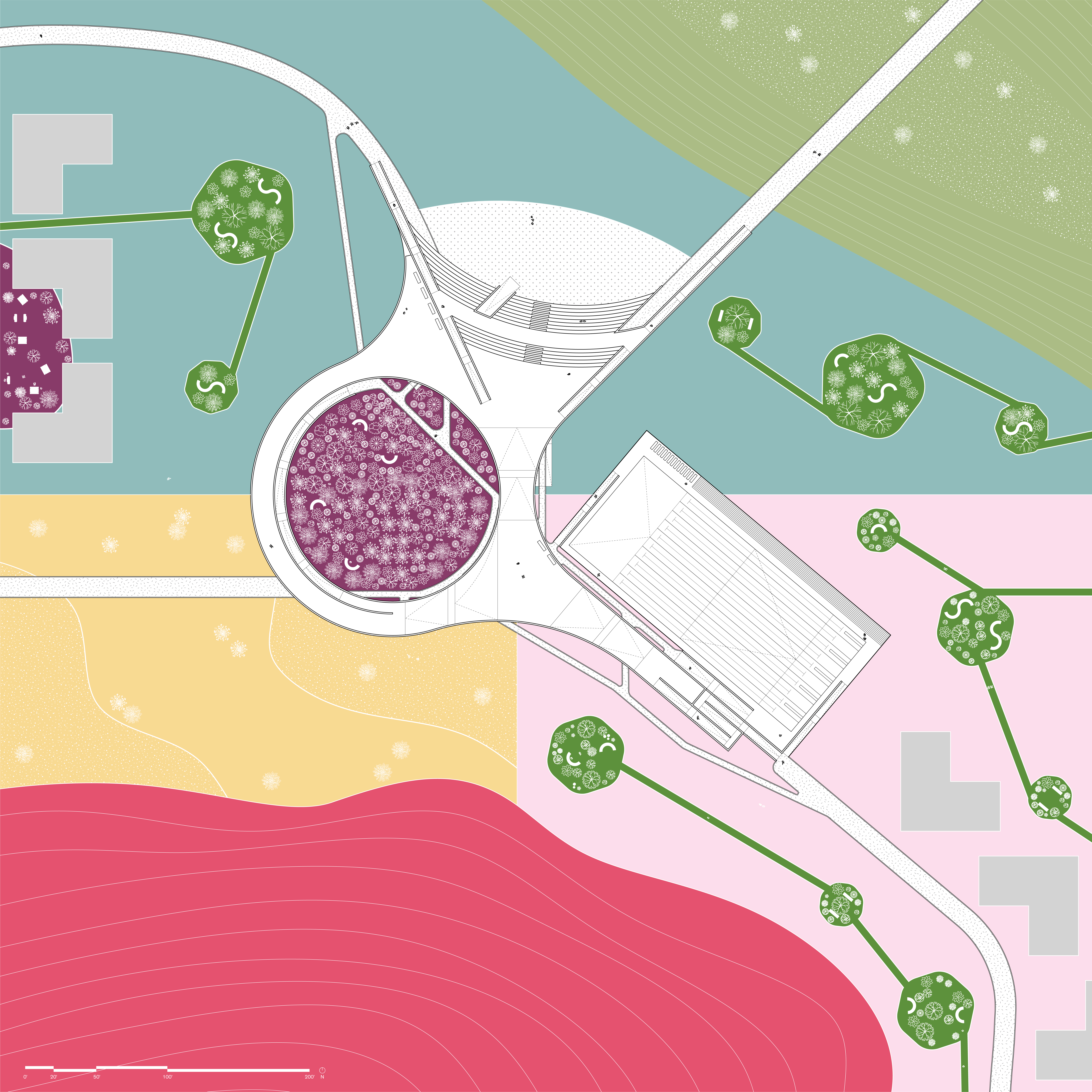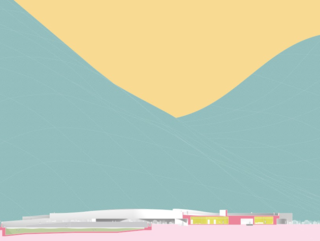
Indigenous Urbanism
403C.5 Research Studio
2024
INDIGENOUS URBANISM
Work by Jane Wu (MArch '24) and Charley Andrews (MArch '24) for "Active Architecture", a Research Studio taught by Jeffrey Inaba. This studio explores super-aging in respects to architecture, the build environment, and its connection to surrounding ecosystems. Through the use of active architecture, students explore sustainable solutions to support one’s quality of life, along with future generations, as aging is inevitable.

Project Statement:
We acknowledge our presence on the traditional, ancestral and unceded territory of the Gabrielino/Tongva peoples. We design and speak from non-Indigenous identities, but with the goals of being in respectful, reciprocal, and right relations with the land and its Indigenous peoples. We are grateful to the members of the Agua Caliente Band of Cahuilla Indians who generously gave their time to speak with us, share their knowledge and expertise, and answer our questions.
The longevity and health of people and communities are inherently tied to the health of the land they exist within. In the Coachella Valley, Indigenous Urbanism uses the existing colonial grid to reconnect previously divided land, consolidating the land and sovereignty of the Agua Caliente Band of Cahuilla Indians.
By exercising Indigenous sovereignty and decreasing reliance on profit motivation, Indigenous Urbanism fosters a regenerative future. Our project seeks to connect people to the land on a daily basis, interrogate and negotiate border conditions, and rebalance the relationship between architecture and landscape.








Super-aging - living active and healthy into one’s 80s and 90s - is increasingly common. Yet the architecture of aging is largely lifeless. Unimaginative planning, bland experiences. There are exceptions. In Blue Zones, places where residents live exceptionally long lives, the environment contributes to wellbeing. In fact, the environment is believed to be the most important factor: architecture is critical to long healthspans.
Boomers have been the biggest contributors to climate change in the US. Constructing their cities and suburbs, delivering their infrastructure and consumer goods have left their mark. As an environmental second act, can their future communities support super-aging and also extend the lifespan of their surroundings? The research studio will generate proposals for active architecture, formulating both active uses and vital ecosystems.
Related Faculty |
Jeffrey Inaba |



- Elevation
- Rumble Final Review
- Wu and Andrews presenting during Rumble Final Review